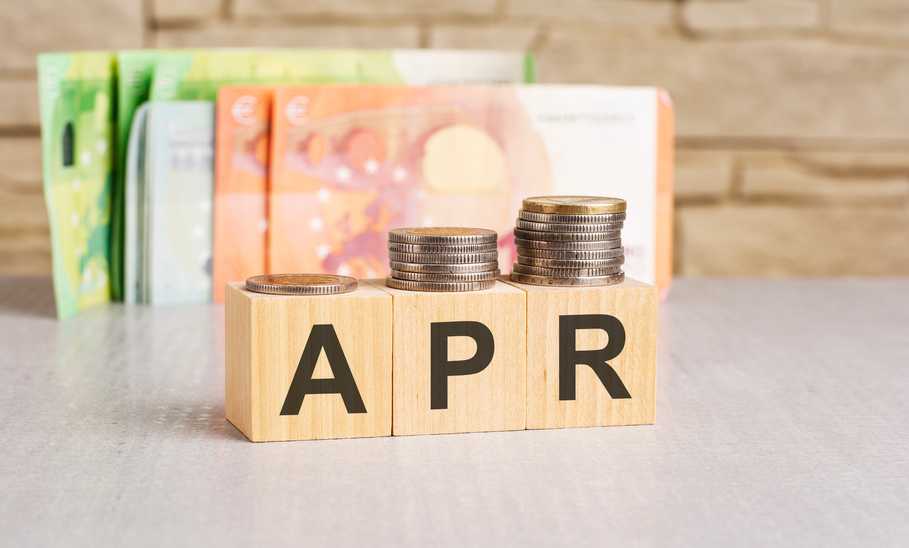What Is Annual Percentage Yield (APY) And How To Calculate It

Our evaluations and opinions are not influenced by our advertising relationships, but we may earn a commission from our partners’ links. This content is created by TIME Stamped, under TIME’s direction and produced in accordance with TIME’s editorial guidelines and overseen by TIME’s editorial staff. Learn more about it.
When you invest money in a savings instrument, you might see two numbers representing interest paid on account, and they’re usually not the same. One is the interest rate, sometimes referred to as the “nominal interest rate,” and the other is APY, which is an abbreviation for “annual percentage yield.”
So which is the more relevant rate?
To the issuer of the savings instrument, typically a bank or credit union, the nominal interest rate is an important number. However, to you as an investor, APY is the most relevant. This is because APY reflects the actual amount you’ll earn on your investment, both in net interest and dollar terms.
This is good news because APY is usually higher than the nominal interest rate. As an investor, you can and should rely on APY in making your investment decisions.
APY reflects the impact of compound interest. To fully understand what this means, let’s start with a discussion of simple interest, which pays a flat rate of interest on the principal amount throughout the term of the security.
Bonds are a good example. On a $1,000 bond paying an interest rate of 5%, the bond issuer will pay 5% of the principal amount each year the bond is outstanding. That will come to $50 per year—or $1,000 paid out over the 20-year term of the bond.
The interest will be paid to bondholders according to the interest distribution schedule of the bond, rather than being reinvested in the bond. Put another way, the bond will carry a value of $1,000 throughout its term, to be paid upon maturity. Because the interest payments are not used to increase the investment in the bond, those payments do not earn additional interest.
By contrast, bank certificates of deposit (CDs) typically pay compound interest. Compounding can take place monthly, daily, or even continuously. The more frequent the compounding, the higher the APY, because it accelerates the interest-earning-interest process.
A $1,000 CD paying 5% interest compounded daily would produce an APY of something like 5.10% at the end of one year.
While APY is used to present the most accurate yield on interest-bearing investments, annual percentage rate (APR) applies to loans. The reason consumers sometimes confuse the two is that each results in an effective interest rate, one that’s usually different from the nominal rate.
APY reflects differences in effective interest rate yields based on the frequency of compounding. APR reflects the effective interest rate paid on a loan after accounting for fees paid to obtain the loan.
One of the best examples is points paid on a mortgage. If you are borrowing $200,000 and must pay two points (2% of the loan amount) to get the loan, you are really borrowing only $196,000. That’s because you’ll pay $4,000 ($200,000 x 2%) to obtain the loan.
The APR will reflect the nominal interest rate applied to the net amount of the loan ($196,000) rather than the face amount ($200,000). Using the example of computing APR based on $196,000, a 6% nominal rate paid on a $200,000 mortgage will result in an APR of 6.122%.
The main purpose of APY is to show the actual yield of an investment when compounding is taken into account. What complicates direct interest rate comparisons are compounding frequencies. They vary from one investment to another, and the more frequently the interest is compounded, the higher the actual yield.
If you have two investments, each with a nominal interest rate of 5.0%, but one compounds monthly and the other daily, the investment with daily compounding will produce a slightly higher yield. This is why you should determine investment yield by APY, not by the nominal interest rate of the security.
APY results in the standardization of effective investment yields across different issuers and securities. It tells the real story of the yield that an investment is providing.
“Compound interest” is simply a term to describe earning interest on your interest, in addition to what you earn on your principal. It is a form of passive income.
If a savings instrument pays simple interest, meaning a single payment at the nominal interest rate, then that rate and the APY will be identical. No interest would accumulate on the single interest payment made, so no additional interest would be earned over and above the nominal rate.
Compounding results in an APY that’s higher than the nominal rate.
The mathematical formula for calculating APY is as follows**:**
APY = (1 + r/n)n – 1
Where:
You don’t need to be able to memorize that formula or use it to calculate APY on every compounding investment, because APY is the published yield on interest-bearing investments at banks, credit unions, and other financial institutions.
For example, Quontic advertises both interest rates and APYs on its CDs. The posting provides a clear example of the difference between the two on select CD rates as of July 5, 2023.
| CD Term | Nominal Interest Rate | APY |
|---|---|---|
6 Months | 4.93% | 5.05% |
12 Months | 5.02% | 5.15% |
24 Months | 4.40% | 4.50% |
36 Months | 4.31% | 4.40% |
60 Months | 4.21% | 4.30% |
Notice that for each CD term, the APY is a bit higher than the nominal interest rate. Quontic compounds interest on its CDs on a daily basis, which means you’ll earn interest on your interest every day of the year. The difference between the APY and the nominal interest rate is the additional interest you’ll earn on the interest.
If you don’t want to take the bank’s word for it and prefer to perform the calculation yourself, use this calculator to see a clear projection of your savings' growth, by inputting your initial deposit, the interest rate, if there is any monthly contribution, and your preferred duration.
We presented an example of APY on CDs above, but APY applies to many different interest-bearing investments.
The table below shows the impact of APY on the various types of savings vehicles (high-yield checking, high-yield savings, and money market) by select individual banks as of May 12, 2024.
Quontic High Interest Checking | Bread High-Yield Savings | UFB Portfolio Money Market | |
|---|---|---|---|
| Nominal interest rate | |||
| APY* | 1.10% | 4.65% | 4.31% |
*APY is subject to change and is mentioned as at May 12, 2024.
An APY can be either fixed or variable, depending on the financial instrument involved.
CDs are a common example of a fixed APY. The terms and interest rate of a CD are fixed until it matures. This includes both the nominal interest rate of the certificate and the frequency of compounding. Once the certificate is in place, it becomes a contract between the investor and the bank and cannot be altered unless the terms of the CD provide for specific changes.
Common examples of variable APY include interest-bearing checking, savings, and money market accounts. This is because rates paid on these accounts are subject to fluctuation based on external factors. For example, interest rate changes by the Federal Reserve often result in changes in the calculation of rates paid on deposit accounts. This can cause rates and APYs to increase or decrease, depending on the direction of the Fed’s changes.
APY is a more accurate presentation of what you will earn on a specific investment than the stated nominal interest rate. It also makes it easier to choose among several investments, as the calculation is standard and will reflect the all-important compounding frequency offered by each. The nominal interest rate matters, but your focus should be on the APY.
APY rates change frequently, so the answer to this question will change as well. One of the best ways to know if an APY is good is to match it against the FDIC’s National Rates and Rate Caps list. For example, for June 20, 2023, the average rate on savings accounts was 0.42%. Any rate higher than this would constitute at least an above-average APY.
If you’re looking for a high APY rate, start with the banks listed in this article. We specifically included them because they pay among the top rates in the country.
Yes, because it can help you make an accurate evaluation of two very similar investments and reach a definitive conclusion. Two investments may be offering the same nominal interest rate, but if one compounds interest daily and the other only monthly, the one with daily compounding will provide a higher APY.
APY can vary considerably by interest rates among various savings products. Checking accounts typically have the lowest APY because the account holder can withdraw funds at any time. As the account balance is less predictable, risk increases and the bank will pay lower interest.
Savings accounts and money market accounts usually have higher APYs because funds are not withdrawn as frequently from these accounts, reducing risk. Depositors often hold funds in savings and money market accounts for longer terms and accumulate larger balances. This enables banks and credit unions to pay higher rates on these funds.
The highest rates usually go to CDs. This is because the money is held in the certificate for a specific amount of time, reducing risk further and making it easier for the bank to set more-aggressive interest rates. In addition, in general the longer the term of the CD, the higher the rate paid on the certificate. This is because the longer term is even more predictable, again reducing risk.
The information presented here is created by TIME Stamped and overseen by TIME editorial staff. To learn more, see our About Us page.



